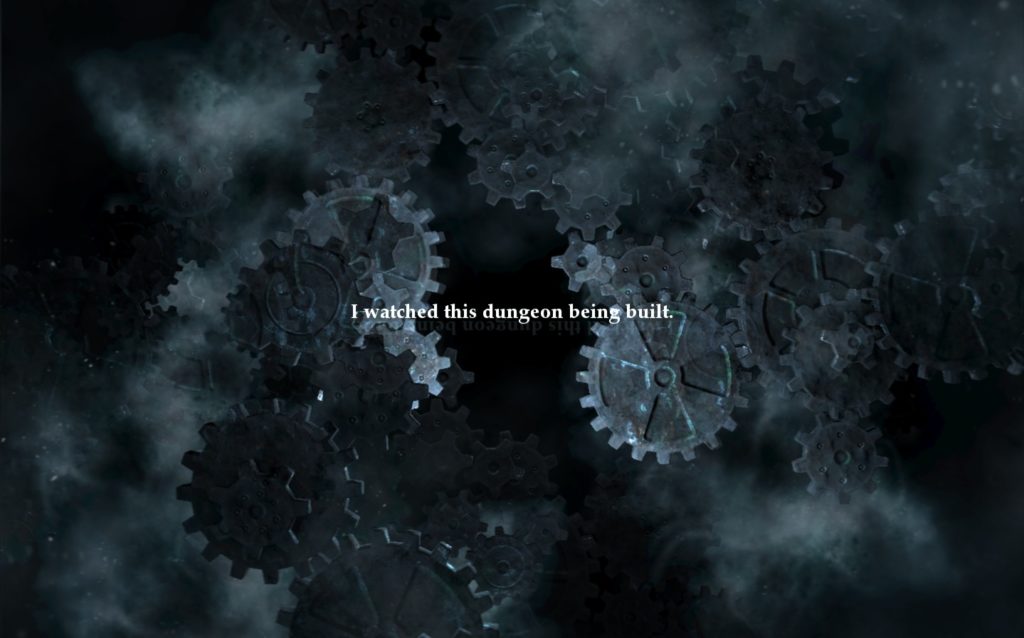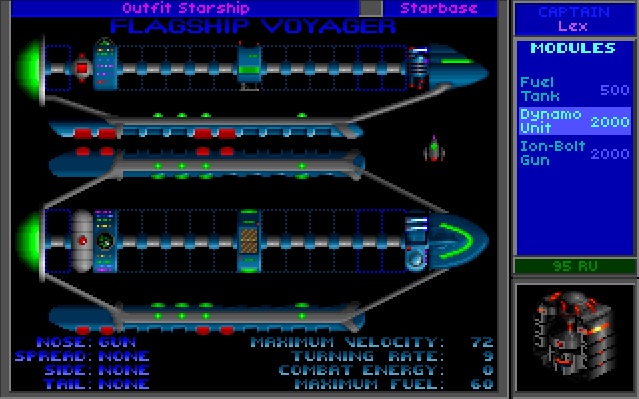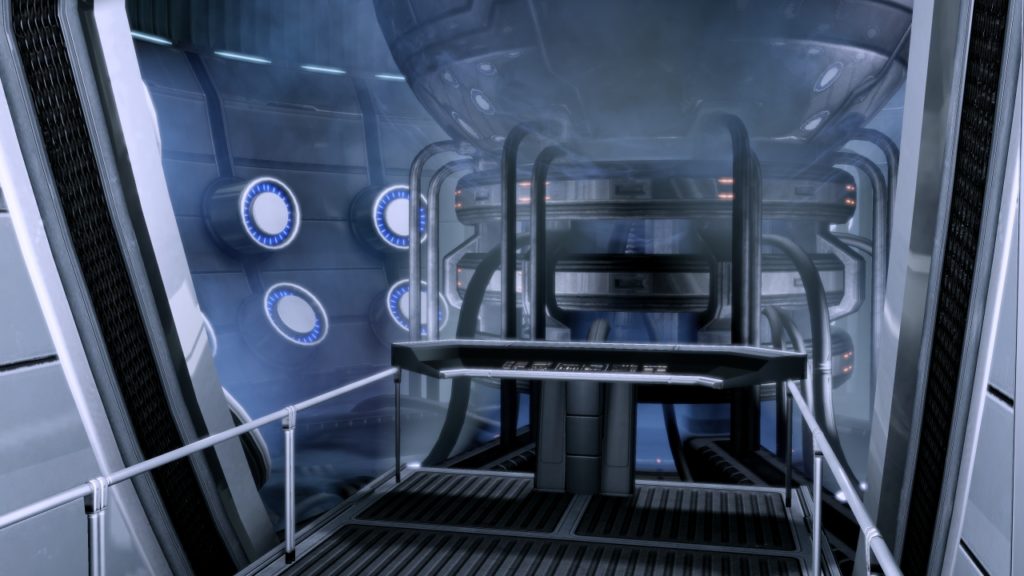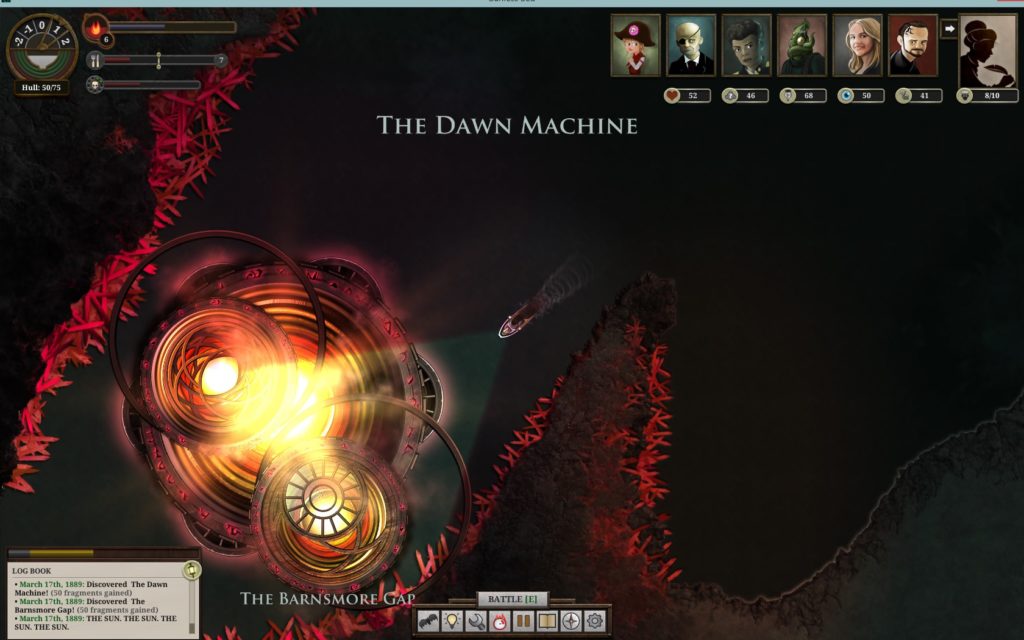How do you deliver narrative to a player in a content-rich, nonlinear game?
This is neither a purely mechanical question (“non-player characters scattered through the open world will offer quests, highlighted by giant floating question marks over their heads”) nor a purely story-driven one (“the player is a one-man army, so he’s always getting orders and advice from military commanders”). It’s a question that needs consideration from the very beginning, and ties into everything from the most basic game mechanics to your choice of intellectual property.
Let’s talk about one particular way of thinking about this problem. Let’s talk about story engines.
What’s a Story Engine, and How Much Will It Cost Me?
The term “story engine” is commonly applied when discussing episodic television. It’s the part of a show’s premise that allows a new story and conflict to be created every week–stories and conflicts different enough to cover a wide variety of topics and situations but similar enough to feel like natural extensions of the show’s core. Comedies and dramas both use story engines–“mismatched office workers must serve under a wacky boss who’s constantly causing trouble” is as valid as “monster-hunters live over a small town’s monster spawning grounds” or “explorers in space investigate and learn about a new planet every week.”

Not actually a Story Engine (from The Legend of Grimrock)
These are, of course, simplistic summaries–the “real” engine (note: there is not a real engine) is more complex–but it gives an idea of what we’re discussing. Most good story engines can actually generate stories through a few different methods (“sometimes the space explorers go to war with aliens, or experience conflict within their ship’s crew”), and not every story needs to emerge from the story engine (“this week, in a special episode, the detectives rally around a colleague whose mother has cancer”). Nonetheless, a strong story engine is what allows an episodic narrative to run for one hundred entertaining episodes instead of ten.
With our terms defined, let’s turn to games. Starting with…
What games benefit from strong story engines? Your linear, level-based first-person shooter probably doesn’t need much of a sustainable story engine. (It might! But it probably doesn’t.) Your 40-hour role-playing game, your quest-driven MMO, and your open world action-adventure set in a city packed with tasks and objectives probably do.
Basically, if your game has a lot of content–particularly if that content is consumed in discrete components (such as designated quests or missions)–and that content is offered in a nonlinear fashion, you probably want to think about your story engine. With enough content delivered over a long period–e.g., a game with regular downloadable updates–even linear games may benefit (as we’re essentially in the television model again).
How does a game story engine work? A basic story engine should do the following:
Generate diverse player-oriented stories and conflicts. This may be a passive part of the story–the setting’s background might handle this (“in Raceworld, every citizen wants to win the daily 100-meter dash… no matter what it takes!”), or it may be integral to the overarching plot (“the player’s goal is to become the most popular kid in school by winning over her classmates one at a time”). The generation mechanism could also be active or mechanical (e.g., in a faction-driven game, a player’s progress might always anger one faction or another and create conflict).
It’s easy to end up with a story engine that’s too limited or too generic. Can you really get 50 stories out of a lone wolf’s battle against mindless alien invaders? Does your protagonist’s quest through Under-Earth for the seven mystic talismans actually set up anything useful, or have you simply given yourself a framework without ridding yourself of the burden of introducing a new story with every quest? How is your resource-scarce society constantly scrabbling for food going to generate player-focused stories?
Use a reliable mechanism to engage the player with those stories and conflicts. This mechanism must be supported both by game mechanics and narrative. It may be extremely simple (the player character stumbles upon NPCs with dialogue that open up the story), practically invisible (a pop-up tracker appears when entering a new area, revealing a set of objectives), tightly focused (the player is encouraged to regularly return to his house, where letters arrive in his mailbox pointing to new content), or incredibly intricate (the player can watch crowds of NPCs to spot individuals exhibiting unusual behavior, then follow said NPCs into story areas).
This delivery mechanism has enormous impact on the type and complexity of the stories you can tell. If every piece of content is introduced through a lengthy conversation with a new character, your central conflicts will be very different than if content is introduced via a series of subtle breadcrumbs or a small group of NPC supporting characters. Quest format dictates, to a large extent, quest content; and how you open a quest is an important part of that format.
Allow the resolution of said stories and conflicts through normal gameplay. This one is pretty obvious, but still worth noting: If the conflicts your story engine generates are all about reaching a given destination in a short time, don’t pair them with a game oriented around patient, stealth-based gameplay. If your story engine creates stories about political maneuvering, don’t use it for a game without a conversation mechanic. And if your game is oriented around combat, don’t build a story engine that generates intricate meditations on philosophy and diplomacy.
In the classic action / adventure / strategy game Star Control 2: The Ur-Quan Masters, the player explores and fights through an occupied galaxy to find alien allies against the occupiers. Naturally, different aliens have their own troubles with the occupiers that must be resolved before an alliance can be struck; these troubles can be solved by further exploration (finding more allies, discovering odds and ends on lost worlds, etc.) and combat.
This is a simple, elegant means of generating stories appropriate to the game. It works if there are three alien races to find and it works if there are fifty. It keeps the player at the center of the story (the aliens, being oppressed, can’t organize on their own) and allows for numerous variations (some of the aliens have sinister agendas!) It feels natural. It feels obvious.

Upgrading a (non-story) engine in Star Control 2
But tweak it just a little bit and the engine suddenly becomes weaker. Change all the aliens to humans from a single society and your story variety drops considerably (unless you spend a lot of upfront effort detailing that society). Replace the imperative to make allies with the more vague need to stop the occupiers and the player lacks clear motivation and drive when encountering new characters. Change the exploration-based discovery of content to distress calls that can reach the player at any time and you’ve suddenly got the player flailing to track a dozen threads at once.
(In fact, Star Control 2‘s story engine is far more elegant and far less simple than this, but we’ll save that for a different post.)
It shouldn’t be hard to test a story engine’s basic functionality. Look at your game’s setting, story, and mechanics as they stand. Can you crank out a dozen very short and very interesting quest pitches pretty much immediately? Are they all different? Do they feel true to your narrative and not overly generic? Do they not require excessive setup? Then you’re at least on the right track.
Can a procedural content generation system work as a story engine? Maybe. A good procedural content generation system probably does double as a story engine (see, for example, Shadow of Mordor‘s Nemesis system). It should create a diverse array of conflicts that all naturally emerge from the game’s premise and readily motivate the player to engage.
But story engines are only a mental model for the creative process–they’re not a formula. Identifying your story engine doesn’t mean you can build it as an actual piece of software.
What are some advanced story engine features? In addition to the modular, episodic-style content that story engines are built to create, most games also have a larger-scale throughline–a roughly linear overarching plot of some sort. A good story engine should feel like the natural consequence of this plot–conflicts arise because of the player’s overarching goals, and resolving them pushes the player down the overarching path. (If the player wants to free the Earth from alien invaders, every mission to shoot aliens is a means of progressing. If the player wants to become the Avatar of Virtue, then every encounter with townspeople in which she can demonstrate truth, love, or courage contributes to the main plot.) A poor story engine creates stories tangential to the main plot (“Your goal is to kill the king, but you’ll need money to equip yourself. Fortunately, there are hundreds of ways to make money in this city…”)
In more complex games, stories engines can also nest. Some conflicts and stories are larger-scale than others–a top-level story engine may boil down to “The player must bring peace to a land in anarchy after a war by traveling to hotspots and preventing them from erupting into total chaos; the player receives leads on each hotspot from the heir to the throne back in his home garrison”; while each hotspot might have an engine of its own focusing on local concerns and using different delivery mechanisms.
Similarly, a game might also use multiple story engines that run in parallel but open the same content. This can be a distracting mess if implemented poorly or utterly invisible if handled well. In the Star Control 2 example, a narrative-light resource gathering game emphasizes the need to explore. The process of resource-gathering naturally brings the player into contact with potential alien allies, while returning with resources to a central location triggers pointers to content the player may have missed.
Advantages of Using a Story Engine
In truth, you’re probably using a story engine already–it’s just a question of whether you think of it in those terms. But by tuning the engine’s elements, here are some of the clearest benefits:
Storytelling Shortcuts. A good engine helps cut out the setup of every “episode” of story and get right to the conflict. With many of the story elements already clearly defined and with the player character already motivated, every story can focus on what’s unique and interesting rather than getting bogged down in exposition.
Familiar Form. Expectations are powerful. An audience who understands that a victory taking place too early in a story will soon turn sour feels a dread and tension that adds to the experience. Knowing an audience’s expectations also allows a writer to subvert those expectations for occasional additional effect.
When a player understands the form and themes of a game’s episodic stories, it allows a game writer to design to that experience. A player’s excited expectation when the traditional quest-delivering radio call comes in is a powerful tool; whereas a game that delivers content in a different way every time denies the player that particular sensation.
Episodic Structure. Content-rich nonlinear games tend to be episodic even when the designers don’t intend them that way. In practice, a player’s play session is likely to be bounded by the length of one or more “quests” (or other relevant story components)–that’s the pattern he falls into, starting at the beginning of one story and taking a break at the end of another.
In fact, for many players, the overarching storyline will be secondary to the episodic stories–it’s rare for the majority of players to actually complete a given game (there’s lots of data on this, but see, for example, here). By focusing your game on these episodic stories and building a strong engine, you’re optimizing for the player’s true experience. You’re writing a book of short stories instead of a novel because you know your audience won’t read everything.
See also “Designing Stories for Nonlinear Game Segments” for additional discussion of this and related issues.
Modular Content. Game development is an uncertain art. Content gets cut and content gets added with impressive regularity. If you’ve got a strong story engine, you should be able to crank out additional stories without enormous difficulty when the call to add 5 more hours of gameplay comes along; and when your game needs to be trimmed for cost, you know your stories are modular enough that you can afford to cast them into the abyss.
A Few Examples, Please?
Let’s briefly consider a few examples of story engines in games and how they succeeded (or didn’t).
Mass Effect vs. Mass Effect 3. You might expect two games in a series featuring the same protagonist to use the same story engine. But while they have many similarities–including the player character’s role as a sort of militarized space cop (in the Lensmen / Jedi / Green Lantern mold)–these games spin up their content in dramatically different ways.

Still not a Story Engine (Mass Effect 2, via masseffect.wikia.com)
In Mass Effect (BioWare, 2007), the player’s primary objective is to hunt down a rogue officer involved in a mysterious galactic conspiracy involving ancient but powerful technology. You may notice that this is an extremely specific objective, which is both boon and bane. It gives the player clear direction for the main plot, but–as we’ve discussed–the “main plot” is generally not the majority of content for a game of this type.
Mass Effect integrates its side quests (the real test of a story engine in an RPG) with limited success. Most have limited relation to the main plot, instead relying on the player’s status as space cop to involve him in smuggling schemes, salvage missions, and diplomatic entanglements. Most are received by stumbling into the correct NPCs at the right time and place. For the most part, they feel appropriate to the universe–but they always feel like side stories and often a bit poorly motivated. After all, I’ve got a conspiracy to investigate. At their worst, they’re generic and impersonal.
Whereas Mass Effect 3 (BioWare, 2012), by focusing its story engine, creates a much more integrated feel. In this game, the galaxy is at war, and the player’s role is to lead a coalition to victory. The vast majority of ME3‘s side quests contribute directly to this goal–the player recruits new allies, acquires weapons, makes strikes at enemies, and so forth. The motivation for engaging in these missions is immediately clear; each story can focus on what makes it interesting rather than on giving the player a reason to even care.
Mass Effect 3 also tunes its story engine when it comes to mechanics. A universal “Galactic Readiness” rating rises whenever the player aids the war effort. More quests than ever are delivered to the player directly from her home base–delivered through calls or e-mails to her ship. The story engine creates content that is narratively appropriate, immediately accessible, and mechanically rewarding.
Sunless Sea. In Sunless Sea (Failbetter Games, 2015), the player is an explorer and merchant sailing through a mysterious world: discovering new islands and ports and meeting their strange inhabitants. The player is given very little overall motivation (a selectable “Ambition” determines certain win conditions but otherwise plays no substantial role) and there is no main storyline–all quests, in effect, are side quests. Such a game requires an effective story engine.
Sunless Sea succeeds largely by virtue of the breadth of the type of stories its engine generates. The game’s world includes steampunk technology, Lovecraftian monsters, sorcery, fire-and-brimstone-style demons, Victorian romances, pulp-style talking apes, and a hundred more oddities besides. With so many toys in the toybox, every side quest is able to offer something new–the player is unlikely to grow tired from seeing the same themes too often.
Of course, that same breadth and lack of coherence means that a player may lack the motivation and emotional stake that games like Mass Effect provide. More than once I encountered a questline in Sunless Sea that appeared intriguing, but which I had no compelling reason to involve myself in. (“Why would I risk my life to do that?”) Fortunately, there were plenty more questlines to choose from.
Sunless Sea also makes a strong effort at integrating its story delivery mechanisms into the natural course of gameplay. In a game so devoted to exploration and discovery, it’s natural that the most exciting moments of discovery (finding a new island, say) are most likely to deliver a large number of new stories; but even the obligatory tasks of refueling at ports and selling off cargo can result in new quests, thanks to a mechanic that “refreshes” opportunities after time away from a given island.

Look, this was a hard post to illustrate. Okay? (Sunless Sea)
If we were to make a television analogy, Sunless Sea is closer to Doctor Who (wildly careening from genre to genre, largely disintereted in ongoing storylines, and purposefully inconsistent in tone) than Mass Effect 3‘s Battlestar Galactica (tightly focused thematically but able to explore numerous aspects of its constrained setting).
Dismantling the Engine
A story engine is a thought experiment–a creative tool, useful for modeling narrative possibilities and generating inspirational templates. It is not prescriptive or a necessary step in anyone’s process. So why even bother?
Because models can be useful, and help constrain creation to the realm of the viable. The more people on a team, the more templates can lend clarity as to intent. And because it’s good to test whether you can create a thousand interesting side quests before diving in.
